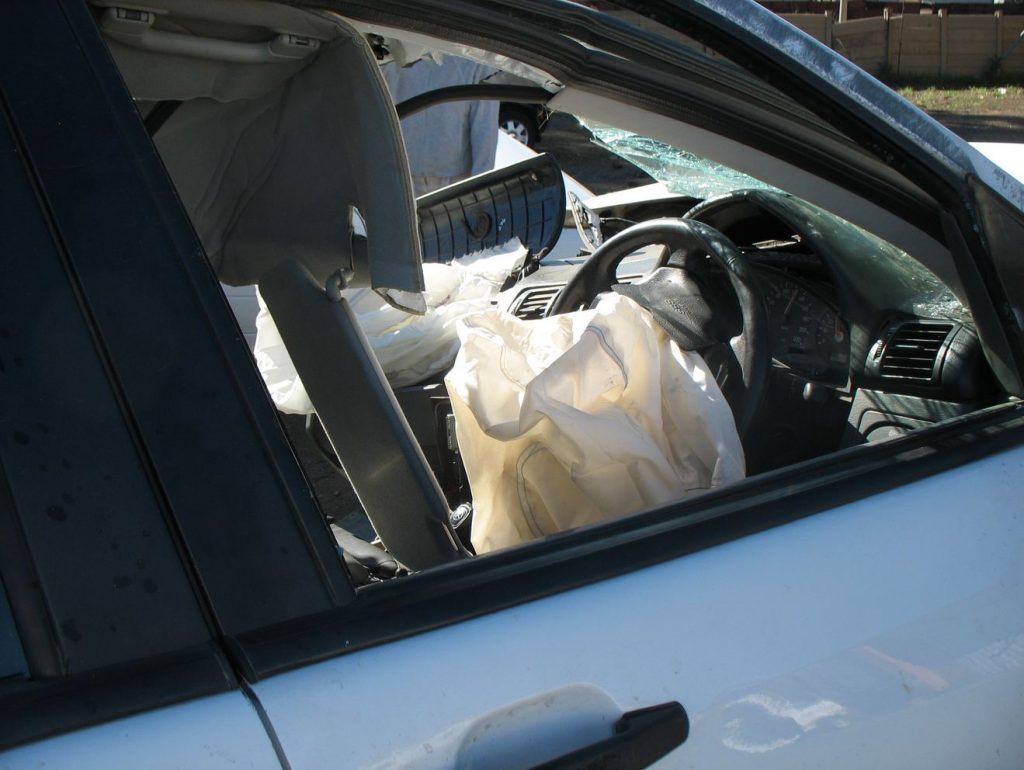What do you know about the importance of air bags and the safety they provide? On the Arrive Alive website we have shared much information on Seatbelt Safety and Child Restraints. We would also like to share some information on air bags from an interview with Petro Kruger from the Road Safety Foundation:
Is it a requirement for all newly manufactured cars to be fitted with frontal airbags?
As far as I could determine the installation of airbags is not compulsory. The proposed amendment to the Standards Act (Act29 of 1993) states that should an airbag be fitted to a vehicle there should be a clear sign stating that there are airbags fitted and should a passenger airbag be fitted there should be a very visible warning sign indicating the extreme hazard of using a rear facing child restraint on the passenger seat.
2. Since airbags were introduced and installed, has the mortality rate decreased? If so what was the percentage and what is the percentage now?
In 2006, the National Highway Traffic Safety Administration (USA) estimates air bags saved 2,796 lives. They are most effective in combination with seat belt use. We unfortunately do not have any South African statistics on airbags.
3. Are there any laws that state air bags are a danger to children under the age of 13?
There are no laws regarding the dangers of airbags to children other than the compulsory warning sign should a passenger airbag be fitted.
An airbag can seriously injure or even kill an unbuckled child who is sitting too close to it or is thrown toward the dashboard during emergency braking. Experts agree that the following safety points are important:
• Children 12 and under should ride buckled up in a properly installed, age-appropriate car seat in the rear seat.
• Infants in rear-facing child seats (under one year old and weighing less than 10 kg) should never ride in the front seat of a car that has a passenger-side airbag.
• If a child over one year old must ride in the front seat with a passenger-side airbag, he or she should be in a front-facing child safety seat, a booster seat or a properly fitting lap/shoulder belt, and the seat should be moved as far back as possible.
4. What force do they apply on the passengers in a collision?
The airbag system ignites a solid propellant, which burns extremely rapidly to create a large volume of gas to inflate the bag. The bag then literally bursts from its storage site at up to 322 kph — faster than the blink of an eye! A second later, the gas quickly dissipates through tiny holes in the bag, thus deflating the bag so you can move. Even though the whole process happens in only one-twenty-fifth of a second, the additional time is enough to help prevent serious injury. The powdery substance released from the airbag, by the way, is regular cornstarch or talcum powder, which is used by the airbag manufacturers to keep the bags pliable and lubricated while they’re in storage.
5. Are airbags potentially dangerous?
Since the early days of auto airbags, experts have cautioned that airbags are to be used in tandem with seat belts. Seat belts were still completely necessary because airbags worked only in front-end collisions occurring at more than 10 mph. Only seat belts could help in side swipes and crashes (although side-mounted airbags are becoming more common now), rear-end collisions and secondary impacts. Even as the technology advances, airbags still are only effective when used with a lap/shoulder seat belt.
6. Are they a necessary safety feature in today’s society?
For the most part, airbags prevent far more injuries than they inflict. However, in the process of protecting people in vehicle crashes, airbags often inflict unnecessary injuries. Abrasions to the face and arms, and other non-permanent or non-incapacitating injuries may be unfortunate, though necessary, trade-offs for the protection against more serious injuries that airbags are supposed to provide. Nonetheless, airbags may unnecessarily inflict permanently debilitating or incapacitating injuries.
7. Do you encourage drivers to purchase vehicles with air bags?
We encourage people to purchase vehicles fitted with as many safety devices as possible including airbags, ABS, ESC, etc.
8. If a car is fitted with more airbags is that safer in the event of a collision?
Airbags are designed to reduce the impact of the occupants in a vehicle against the inside of the vehicle. For instance in a frontal crash the airbag in the steering wheel will deploy and reduce the impact of the driver against the steering column. A study done in America in 2003 found that side airbags that include head protection were reducing deaths by about 45 percent among drivers of passenger cars struck on the near (driver) side. Side airbags that protect the chest and abdomen, but not the head, also were reducing deaths, but they were less effective (about 10 percent).
9. Have there been any reports of airbag malfunction?
Airbag deployment malfunctions can occur do to the angle of deployment, the speed of deployment, the completeness of deployment, and/or if the act of deployment does not occur properly during impact. In some newer models the airbags only deploy if the occupants are using their seatbelts. It is essential to read the vehicle manual.
10. Should airbags be a requirement?
I think that airbags have shown to improve the safety of vehicle occupants and should be a standard fitment requirement.
11. How long do the airbags remain inflated for?
See no 4
[ A word of appreciation to Petro Kruger, Director – The Road Safety Foundation for providing answers to these questions]
Also view:
